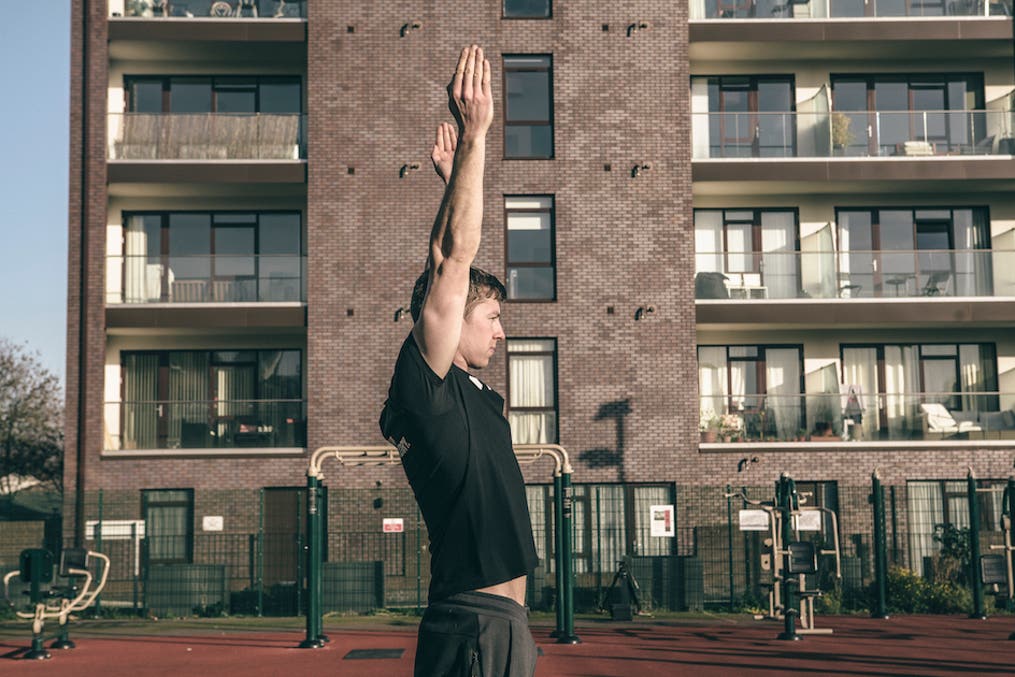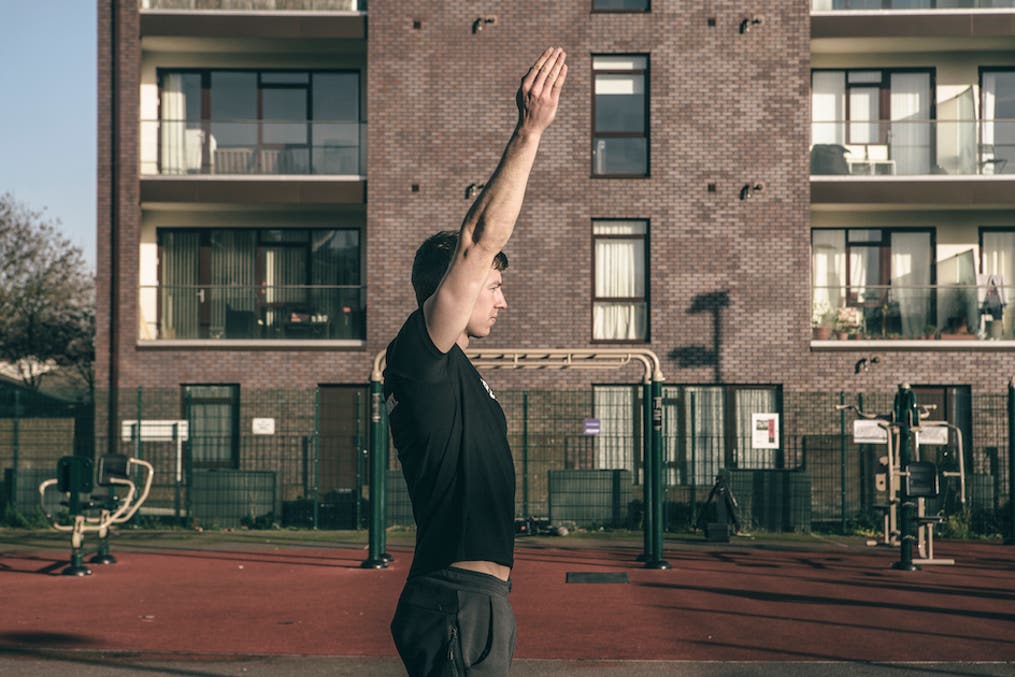Handstand pushups are one of the most advanced exercises in Freeletics and they certainly aren’t for the faint-hearted. Initiating yourself into the world of this challenging (but rewarding) exercise isn’t a process to be rushed. As Freeletics Training Specialist John Kennedy explains, building up to the perfect handstand pushup can be far more beneficial than jumping straight in and risking injury.
Risk =/= Reward
I’m a movement nerd. I train almost every day. I do barbell strength, kettlebells, brazilian jiu-jitsu, yoga, stretching and bodyweight training. I love handstand pushups. But even for me, handstand pushups can be a risky endeavour.
Every exercise comes with a risk to reward ratio. The risk for injury during a pushup is obviously quite low. In contrast, the rewards are great because it’s a highly effective exercise for upper body and core strength. Pikes offer similar rewards, but come with a higher risk as you’re at a disadvantaged pressing angle and could fall flat on your face as fatigue sets in. Handstand pushups have the potential to offer high rewards for overall arm, shoulder and core strength, but come with a considerably higher risk than pushups and pikes.
Aside from the obvious danger of collapsing onto your head, there are three more reasons why you should reconsider doing handstand pushups if you’re not certain that you’re ready. Pay attention to the following 3 areas to prevent injury and to set yourself up for long-term handstand pushup performance.
#1 You can’t extend your wrists enough
Wrist extension is when you bring the back of your hand up towards your shoulders. For the handstand pushup, you need to be able to extend your wrists to at least 90°. The challenge lies in making sure that you get your wrist into the right position by actively using your forearm muscles, rather than relying on the passive extension of the wrists.

If you aren’t able to actively get your wrists to 90°, then you have to rely on the floor to force your wrist into that position. This puts you at an increased risk of injury because your muscles and joints can’t control this range. This can lead to pain not only in the wrists, but also potentially in the elbows and shoulders, leading us to the second area to be aware of...
#2 You can’t flex your shoulders enough
Shoulder flexion is when you raise your arm overhead, bringing your bicep to your ear. The key here is to keep the arm straight, the elbows locked and to bring the arm inline with the back of your head or your ears.
Shoulder flexion with straight elbows passing the ears:

Insufficient shoulder flexion, bent elbows and upper back rounding:

If you have to bend your elbows to get your arms directly overhead, you’re putting your joints at risk. This would be like trying to stand on a flagpole that has a bend in the middle. It might still hold up, but it sure lacks stability. The same is the case when you try to support your entire bodyweight on your bent elbows. Shoulder mobility is absolutely crucial, not just for handstand pushups, but for all upper body exercises.
#3 Your shoulders aren’t stable enough
It’s a tough pill to swallow, but the body is a master at compensating. If one area lacks strength and stability, the body is happy to take a shortcut, but this often happens at the expense of other joints, which can cause serious problems. When the shoulders are not strong enough, the body tends to compensate in the spine, especially in the lower back. Have you ever seen someone in a handstand look more like a banana than a straight line? Chances are that their shoulders are simply not strong enough, so the body has to rely on the spine to take some of the load. Obviously a hyperextended lower back can lead to all sorts of back pain in the long term.
If you lack the necessary stability, then it is best to train and improve this in safer positions before progressing to handstand pushups.
So why does the Coach give me handstand pushups if I’m not ready?
If you noticed a deficit in any of these areas and get handstand pushups in your next coach week, then don’t worry. It doesn’t mean that you should never do handstand pushups again, it just indicates that you might need a little more preparation before you take the plunge. Train the fundamentals until you feel that your handstand position is up to scratch and consider sticking with the safer options (pikes and pushups) for now. In the meantime, make sure to mobilize your wrists and improve your shoulder flexibility and stability.
There’s no reason why you shouldn’t eventually be able to nail the handstand pushup, but it’s an exercise that requires more preparation than most. Follow this advice, and you’ll be executing the perfect handstand pushup in no time.